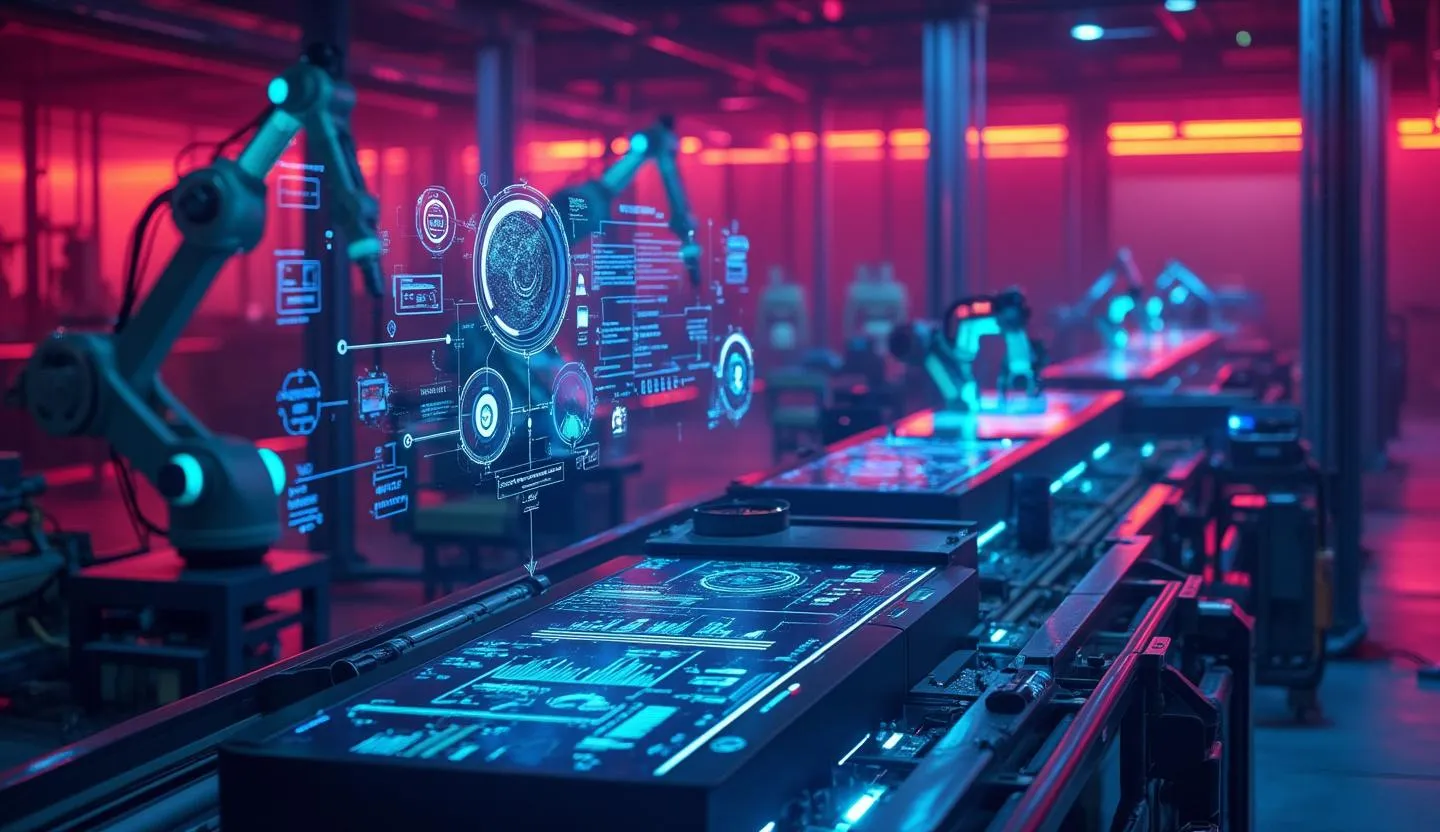Manufacturing’s Digital Pioneer Faces a Mixed Market Backdrop
As the closing bell nears, Rockwell Automation (ROK) stands out as a notable underperformer in the industrial automation sector, slipping 2% to $348.63 on volume of 73,761. The world’s largest company dedicated to industrial automation and digital transformation, Rockwell is a bellwether for manufacturing’s evolution. Yet, today’s session sees it lagging, even as the sector’s focus shifts toward innovation and long-term growth, rather than pure cost control. This mixed sentiment comes amid a flurry of recent news highlighting both opportunity and emerging risks for Rockwell and its peers.
Key Takeaways
ROK down 2% in regular trading, underperforming both its sector and the broader market.
Volume at 73,761, suggesting above-average investor attention during today’s session.
Recent news: Rockwell’s annual Smart Manufacturing Report points to the CPG sector doubling down on innovation and workforce development despite cost pressures.
Cybersecurity in focus: 61% of surveyed manufacturing cybersecurity pros plan AI adoption amid rising digital threats.
Industry event: Registration opens for Rockwell’s flagship Automation Fair 2025, spotlighting its role as an industry convener.
ROK’s Session in Context: Performance and Pressure
Manufacturing’s Market Pulse: How ROK Measures Up
Rockwell Automation’s 2% drop today brings its price to $348.63, down from a previous close of $355.67. The move is notable given the broader sector’s ongoing embrace of digital transformation—a trend that should favor Rockwell’s portfolio of automation, AI, and smart manufacturing solutions. However, the market’s response suggests a complex interplay of optimism about the company’s strategic direction and near-term concerns about execution, spending cycles, and macro headwinds.
Volume for the session is 73,761 shares, indicating heightened trading activity as investors react to both sector news and company-specific developments.
Historical Price Action
While the broader industrial sector has seen a choppy trajectory in 2025, Rockwell’s stock performance has generally mirrored shifts in sentiment around manufacturing investment, digitalization, and cyclical demand. Today’s pullback, while material, fits within a pattern of volatility as investors weigh short-term pressures against long-term prospects.
Analyst and Market Sentiment: Navigating New Priorities
Recent analyst coverage of Rockwell Automation has centered on its ability to capture share as manufacturers accelerate digital transformation. However, the company’s latest State of Smart Manufacturing Report surfaces a key theme: manufacturers are prioritizing innovation and workforce development over near-term cost-cutting. This pivot, while positive for Rockwell’s addressable market, may mean longer sales cycles and delayed capital commitments as customers focus on talent and R&D.
“Manufacturers are placing greater importance on innovation, workforce development, and long-term growth strategies.”
— Rockwell Automation, 2025 State of Smart Manufacturing Report (PRNewsWire)
Analyst price targets have shown only modest upward revisions, with many on the Street adopting a wait-and-see approach until there is clearer evidence of order acceleration and margin improvement. The consensus is that Rockwell is in the right place strategically, but must navigate execution risks as industrial clients tighten budgets or delay big-ticket automation projects.
Sector Dynamics and News Catalysts: Innovation, Cybersecurity, and Events
Innovation Over Efficiency: Sector Shifts
Rockwell’s latest survey of Consumer Packaged Goods manufacturers highlights an industry at a crossroads. Companies are investing in AI and workforce development to maintain competitiveness, reflecting a secular shift from cost-driven automation to innovation-led transformation. This is a double-edged sword for Rockwell: while it expands the scope for digital offerings, it also raises the bar for delivering value and ROI.
Cybersecurity: The New Battleground
The digitalization of manufacturing comes with new risks. According to Rockwell’s Global State of Smart Manufacturing Report, cybersecurity has emerged as the top external concern for manufacturing leaders, trailing only economic conditions. A striking 61% of cybersecurity professionals in the sector plan to adopt AI-driven defenses, underscoring the urgency—and opportunity—for Rockwell’s cybersecurity offerings.
“Cybersecurity is now the top external concern after economic conditions.”
— Rockwell Automation, 2025 Global State of Smart Manufacturing Report (PRNewsWire)
Automation Fair 2025: Platform for Thought Leadership
Rockwell continues to cement its industry leadership with the upcoming Automation Fair 2025, now open for registration. As a premier event for industrial operations professionals, the fair is a key venue for Rockwell to showcase new products, foster partnerships, and reinforce its central role in shaping manufacturing’s digital future.
Investor Implications: Risk, Reward, and Time Horizons
With a business model that is increasingly tied to secular digitalization trends, Rockwell offers long-term upside for investors willing to stomach near-term volatility. Today’s pullback may reflect rotational sector flows, investor caution around capital spending, or simply profit-taking after a recent run-up. Yet, the underlying narrative—a sector doubling down on innovation, with Rockwell at the center—remains intact.
Final Take: Cautious Optimism Amid Innovation Tailwinds
Rockwell Automation’s underperformance in today’s session is a reminder of the market’s near-term skepticism, even for best-in-class operators at the forefront of industrial transformation. As manufacturers pivot from cost-cutting to innovation, Rockwell’s opportunity set grows, but so do the challenges of execution and differentiation. Investors should keep a close eye on order trends, margin signals, and sector spending patterns in upcoming quarters. For now, Rockwell remains a stock to watch—caught between cyclical pressures and the promise of a smarter, more connected manufacturing world.

.svg)
.svg)
.svg)
.svg)

.svg)

.svg)
















